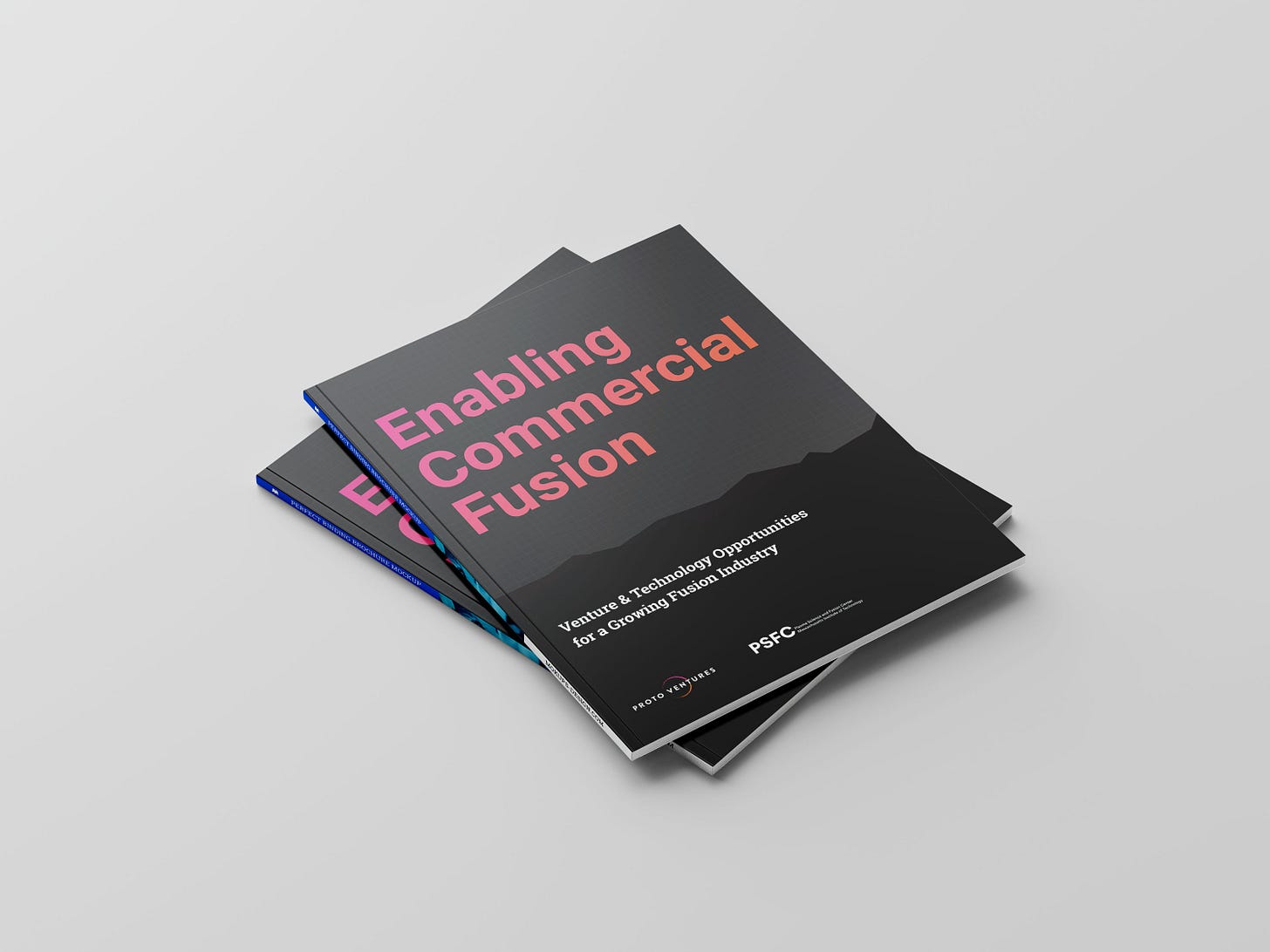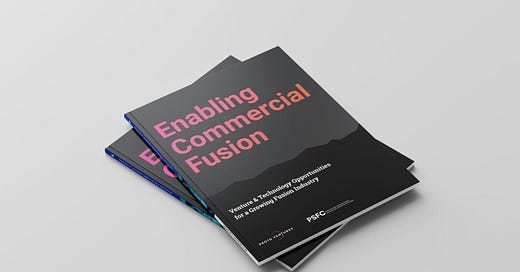I’m thrilled to announce the release of a new MIT report, Enabling Commercial Fusion: Venture & Technology Opportunities for a Growing Fusion Industry.
In recent years, fusion energy has entered a new stage of development: multiple private companies, having collectively raised billions of dollars, are now actively working to build a first fusion pilot plant in the next decade.
Fusion has a long way to go before it (possibly) becomes a mainstream and economical source of power ; many scientific, engineering, and economic challenges lie on the road ahead, including materials. But what is clear is that if fusion power is ever to supply a meaningful portion of the world’s energy, this industry will also need a much more robust supply chain.
Where, then, are the biggest gaps and opportunities for delivering valuable goods & services to fusion power plant companies? If you happen to believe that fusion will inevitably grow into a mature industry, what should you work on now to secure an early foothold in this field?
My colleagues at MIT found that the answers were not so clear, so we set out to address this question for this report.
In envisioning a potential successful future for fusion, we draw parallels to the aerospace sector, where integrators like Boeing or Airbus work alongside a diverse ecosystem of vendors for everything from engines to aircraft design software. Our report identifies five key opportunity areas:
Fusion materials: Innovative solutions are needed for plasma-facing materials, structural components, superconducting materials, and tritium permeation barriers.
Components and consumables: Opportunities abound for vacuum pumps, hydrogen isotope separation tech, sensors, molten salt suppliers, enriched lithium providers, tritium management services, and solid-state plasma heating components.
Subsystems: Fuel cycles, plasma heating actuators, heat exchange, cryogenic cooling, and thermal storage systems offer avenues for standardized, essential components.
Facilities, software, and services: Beyond hardware, the industry requires materials testing facilities, robotic maintenance, liquid waste treatment, and high-precision manufacturing.
Financial capital, human capital, and other non-technical offerings: Rating agencies, workforce training, legal services, and community engagement are crucial for industry growth.
This report results from a collaborative effort between Proto Ventures and the Plasma Science and Fusion Center at MIT.
Read the Report






